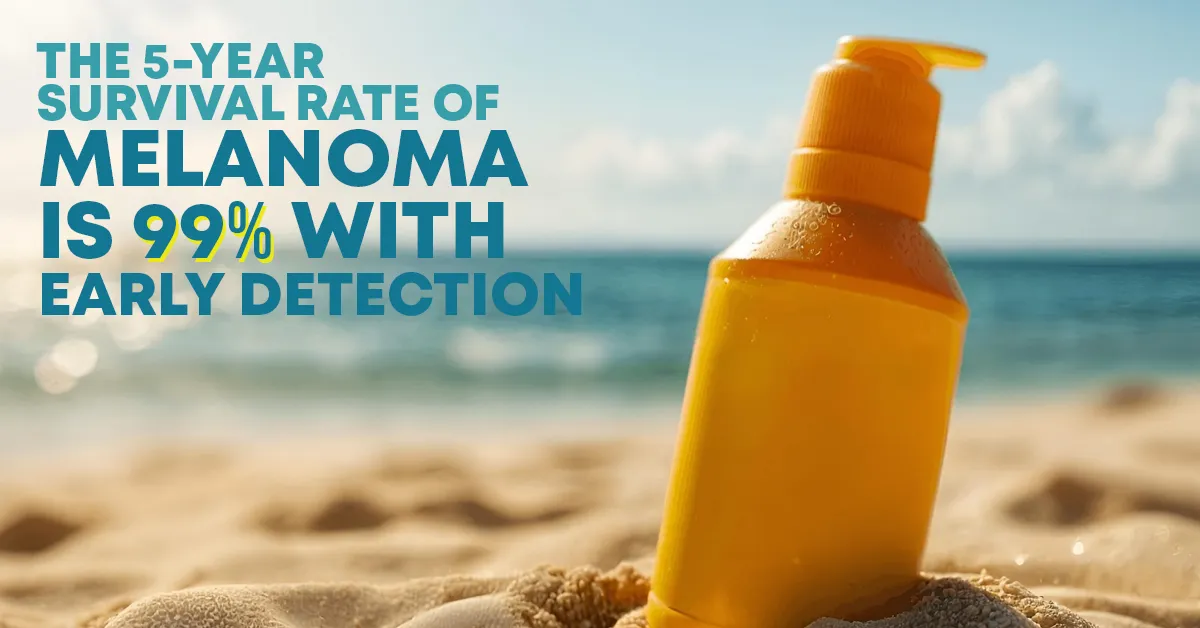In the United States, the most prevalent form of cancer is actually among the most preventable… and that’s skin cancer.
May is the perfect time to highlight this risk to help individuals better prepare for the sunny summer ahead. After all, the most common reason for developing skin cancer comes from exposure to ultraviolet (UV) rays.
Know the Risk
The American Academy of Dermatology Association (AAD) estimates one in five Americans will develop skin cancer in their lifetime with about 9,500 people being diagnosed each day.
Safety concerns are not only for adults. Even a single blistering sunburn during childhood can double your chance of developing skin cancer later in life. This is why it is crucial to help your children observe sun safety.
Even on a cloudy day, about 80% of the sun’s dangerous UV rays are coming through the clouds. This effect can be compounded via reflection off of another surface like water, snow, or sand.
How Can You Protect Yourself?
Sunscreen is the most common approach for protecting oneself from dangerous UV rays. When purchasing sunscreen, pay attention to the SPF value. The AAD recommends using SPF 30 at a minimum, but the higher the better when it comes to SPF values.
Pay attention to how frequently the sunscreen bottle recommends you re-apply it (often around 2 hours). If you are swimming or sweating, you probably need to re-apply sunscreen more frequently.
If you prefer to limit your sunscreen use, then try to increase your time in the shade and wear a long-sleeved shirt or pants to protect your skin.
Is the Sun Worse at Certain Times of Day?
The FDA recommends limiting your time outside during the sun’s most intense hours – often between 10 am and 2 pm. This is when the sun is right above us, and as a result, it is best to get outside early in the morning or enjoy the summer nights (though bugs can be a problem).
The Missing Statistics
A recent change from the Skin Cancer Foundation was announced in 2021 regarding how they track the occurrences of nonmelanoma types of skin cancer. The CDC releases information each year about the prevalence of each type of cancer in America.
However, the CDC’s data only includes melanoma, not data on skin cancer cases as a whole. The Skin Cancer Foundation has changed its approach to estimating nonmelanoma cases to better gather data on these underrepresented cancers.
The data gathered indicates there are about 5.4 million nonmelanoma skin cancers of which 2 out of 3 cases are basal cell carcinoma while the remaining third is squamous cell carcinoma.


